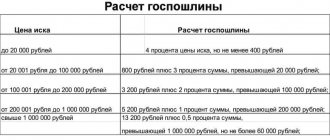It is not difficult to draw up an agreement on the division of a land plot between the owners. But the preparatory work takes time, requires effort and financial investment. Of course, you can entrust such work to a third party and issue him the appropriate power of attorney. Even in this case, you need to understand how much work remains before the official division of the land plot, and what legal consequences it entails.
If, during and after reading the information below, you still have questions, please use the help of a lawyer on our website.
:
Agreement on the division of land between owners
How is a section different from a section?
Expert opinion
Stanislav Evseev
Lawyer. Experience 12 years. Specialization: civil, family, inheritance law.
Partition is a procedure in which two or more new ones are formed from a common land plot. In this case, the divided plot actually ceases to legally exist. After the division of the land, all co-owners remain in their right to dispose (jointly or by prior agreement) of all the formed plots. This is enshrined in law in paragraph 3 of Art. 11.4 Land Code of the Russian Federation.
But after the procedure for allocating a plot, each former co-owner of the joint land will have the right to dispose only of the plot that was formed in proportion to his share in the common ownership.
Another difference is that an allotment can only be made from shared ownership, while division can be carried out in relation to plots that are both jointly and sharedly owned. Moreover, after the allocation, the common area remains, but within new boundaries. And after the division, the original object is legally liquidated.
However, there are two exceptions to this rule:
- division of territories belonging to gardening non-profit partnerships;
- division of land owned by the state or municipality.
These territories, after carrying out the appropriate procedure, in accordance with the norm of paragraph 1 of Art. 11.5 of the Land Code of the Russian Federation, remain within the same boundaries.
A single owner can also divide a land plot. For example, if he needs to subsequently sell part of an overly large plot. But the allotment implies the participation of at least two co-owners.
When division of a plot is impossible
The Civil Code of the Russian Federation divides all things into 2 large categories - divisible and indivisible. This classification also applies to real estate. As a general rule, a land plot is a divisible thing, but if its division leads to a violation of the law, then this particular plot of land becomes an indivisible thing.
Thus, the division of land is possible only if a number of conditions are met:
- the dimensions of the newly formed area are within acceptable values;
- the boundaries of the newly formed area comply with the standards established by law;
- the division of the site does not interfere with the normal use of the building located on it;
- the section does not interfere with the use of the site for its intended purpose and does not create obstacles for third parties.
What requirements does the law impose on the size of the plot?
The minimum and maximum sizes of plots are established in regional legislation and may vary depending on the subject of the federation. In particular, in the Moscow region, the maximum permissible plot sizes vary from 0.04 to 40 hectares, depending on their intended use.
When dividing a land plot, the most important indicator will be the minimum value, since when dividing a land plot in kind, the share of each spouse cannot be less than the minimum possible value in a particular region.
What requirements does the law impose on site boundaries?
These requirements are described in detail in the Land Code of the Russian Federation:
- the boundaries of the site should not be in contact with the boundaries of the populated area;
- the site should not affect the boundaries of the forest park, forestry and other special zones;
- The division of the site should not lead to broken boundaries, interstriations or otherwise interfere with the rational use of the land.
If a land plot belongs to common property, but its division in kind is legally impossible, the court may:
- transfer the plot to one spouse with payment of monetary compensation to the second;
- decide to sell the plot to a third party, dividing the profits between the spouses;
- preserve the plot in common joint or shared ownership, establishing a regime for its use by spouses.
It is worth distinguishing between the division of a plot in kind, with the definition and establishment of new boundary boundaries, and the legal division of a plot with the definition of shared ownership. Recognition of 1/2 share for each spouse is possible without complying with the requirements listed above, since a formal division “on paper” does not entail the separation of each spouse’s share in kind.
Conditions
In order to allocate a land plot from common shared ownership, certain conditions must be met:
- Determining the possibility of causing significant economic damage. If this is possible, then the procedure will not be legal. Regardless of the size of the allocated part of the plot, the remaining co-owners can prohibit the allocation in court.
- Insignificance of the share. If the share in the common property is so small that it cannot be allocated in kind, then this situation is regulated by the norm of paragraph 4 of Art. 252 of the Civil Code of the Russian Federation. In accordance with it, the owner (owners) of the remaining shares must buy out the allocated part from the co-owner. The cost is determined either by a settlement agreement or by a court decision.
In addition to the size, there are several more mandatory requirements for allocating an allotment in kind, namely:
- each of the newly formed areas must be provided with unhindered access (travel, passage);
- the boundaries of all new plots may have territorial intersections (common areas).
It is also worth considering that the actual size of the allocated share may differ from the ideal share proportion. This is due to the fact that during the surveying of a new site, a cadastral engineer, due to the characteristics of the soil or topography, may enter data into the conclusion, according to which the size of the allocated plot will change. This is legally enshrined in paragraph 5 of Art. 13 Federal Law No. 101.
Minimum size of land plot to allocate a share in kind
As mentioned above, one of the legally established conditions for the allocation of a part of a land plot is that its size meets the established standards. So in Art. 1182 of the Civil Code of the Russian Federation states that a plot whose size is less than the minimum cannot be taken for cadastral registration.
Depending on the region of the country in which the property being divided is located, the minimum lot size may vary. Since local by-laws may define their own standards.
In general, the size of the plot, depending on the purpose of the land, should be as follows:
- for gardening needs - 4 acres;
- for the construction of summer cottages - 6 acres;
- for farming - 15 acres;
- for the needs of private household plots - 10 acres.
How to divide a plot with a house between two owners if one does not agree
If the second owner does not agree to divide the plot on which the house is located, contact the judicial authorities to protect your interests.
Prepare a statement of claim containing the following information:
- Full name and contact information of co-owners;
- characteristics of the land plot (location, area, intended purpose, cadastral registration number);
- sizes of plots formed as a result of division;
- compliance with pre-trial dispute resolution procedures;
- reasons why the co-owner refuses to separate the territories.
You can file a statement of claim yourself, using ready-made samples available on the Internet, or seek help from lawyers specializing in such cases.
To support your arguments, please attach the following documents to your application:
- a document confirming the registration of the site with the cadastral authority;
- a paid receipt for payment of the state fee for consideration of the case;
- documents confirming ownership of the disputed area.
A positive decision on the division of a plot in the presence of a residential building is made by the court if, as a result of separating parts of the common territory, it is possible for each owner to have unhindered access to his half of the house.
How to allocate a land plot in kind from common shared ownership
If one (or several) co-owners need to allocate part of the property for sole ownership, then there are two ways to proceed:
- Enter into an agreement with the other owners. This is the most preferred option.
- Apply to the district court with a claim for the allocation of a plot of land from common property.
This may be necessary under the following circumstances:
- there are no documents confirming the right to own and dispose of shares;
- documents are available, but an error was made in the size of the share or other information (about the plot, owner, etc.);
- the impossibility of reaching an agreement and concluding a pre-trial agreement with the remaining co-owners;
- the presence of controversial issues with the local administration regarding the ownership of the site;
- other reasons requiring a mandatory court decision (inheritance disputes, division of property between family members, etc.)
By agreement
Despite the fact that concluding an agreement is considered a simplified procedure for allocating a share from joint property, it is worth following a certain procedure and knowing all its nuances. Let's take a closer look at them.
Procedure
In order to avoid contacting the judicial authorities, you will have to follow a certain algorithm.
Namely:
- Meeting of co-owners. Anyone who wants to allocate part of the land for individual ownership gathers all the owners of the land. They jointly draw up minutes of the meeting, in which they indicate that each of them agrees to the allocation of a share(s), the size, location, and other conditions of the new plot(s) are determined.
- Carrying out land surveying. Typically, the specialist’s services are paid for by those who wish to separate their part of the land. However, in some cases, all owners can agree to share the cost of the work.
- Coordination of survey results. All co-owners, as well as the owners of neighboring plots, gather again. The conclusion of the cadastral specialist is communicated to everyone. All objections are entered or the consent of the parties to the transaction is noted.
- Approval by the cadastral chamber. After agreement with the co-owners and neighbors, the boundary plan is sent to the regional cadastral chamber, where the new site is given an address and assigned a number.
- Registration of rights. A corresponding application and a package of documents are submitted to the Rosreestr branch, on the basis of which changes are made to the Unified State Register.
Required documents
In order to register the plot allocated under the agreement as individual property, you must go to the Rosreestr branch.
The following documents must be attached to the application:
- application (drawn up according to the sample that will be provided by the Registration Chamber);
- passport of the new owner;
- minutes of the meeting of the co-owners of the divided plot;
- cadastral passport;
- conclusion on land surveying (plan);
- extract from the Unified State Register of Real Estate on the ownership of the land plot;
- if the procedure is carried out through a representative, then a certified power of attorney and his passport.
Deadlines
The total duration of the procedure consists of the duration of all stages:
- reaching an agreement - depending on the number of owners and their attitude towards the allocation, usually this process does not take more than 2 weeks;
- boundary work and preparation of technical documentation - depends on the selected cadastral engineer, as well as on the workload of the BTI. Usually this stage is the longest and takes at least 1 month;
- registration of rights – 14 days from the date of filing the application and providing all documents.
Thus, you are unlikely to be able to allocate a plot in less than 2 months.
Price
The only fixed fee that you will have to pay is 2,000 rubles for registering ownership of a new land plot.
All other expenses depend on the region. For example, boundary work costs from 5,000 to 30,000 rubles.
Sample agreement
There is no exact form of this document, but the general content is most often the same.
How to divide a plot of land into two parts if the second owner does not agree
If the second co-owner of the land plot does not agree to the division, apply to the court to protect your rights. The issue will also be resolved in court if the location of the second owner of the land could not be established (it is not possible to notify him of the upcoming division). Hearing the case in court will take into account the interests of both parties and provide the most acceptable option for resolving the conflict situation.
You can draw up a statement of claim to protect your rights when dividing a plot of land yourself, using ready-made forms posted on legal portals.
Based on judicial practice, positive decisions are made when, when dividing a plot of land, the interests of both owners are met (the presence of a separate passage to their plot, compliance with acceptable area parameters, etc.). Based on this decision, contact the cadastral organization to carry out work aimed at separating the boundaries of the created territories. Next, the procedure for dividing the site takes place in the standard mode.
The procedure for allocation through the court
If, for one reason or another, it was not possible to agree with the co-owners on the allocation of territory in an amicable manner, then the only legal way is to go to court.
Procedure
In order to contact the judicial authorities you must:
- File a claim.
- Collect all necessary documents, including information about the disagreement of other co-owners with the allocation.
- Prepare a specialist’s opinion on the actual possibility of allocating the territory.
- Participate in court hearings, defend your interests, bring complaints, and also submit reasonable requests.
- Contact Rosreestr and register the change in ownership.
Participation in a legal dispute by a professional lawyer significantly increases the chances of a favorable outcome of the case. After all, he will be able to prepare a comprehensive package of documents, competently draw up a claim, represent the principal in court hearings, and also, on your behalf, apply to the Registration Chamber and make changes to the Unified State Register of Real Estate.
Statement of claim
A claim for the allocation in kind of a part of a land plot is drawn up according to the general rules enshrined in Art. 131 Code of Civil Procedure of the Russian Federation.
It must contain the following information:
- information about the plaintiff, defendant(s) and third parties;
- cost of claim;
- the exact name of the judicial authority;
- title of the statement of claim;
- the grounds for the emergence of the right to the site;
- description of the land (location, cadastral number, size, whether there are buildings, etc.);
- the size of the shares of each owner;
- essence of the dispute;
- were there any attempts to peacefully resolve the conflict;
- motivated demands against the defendant;
- final part (date, signature, list of attachments, etc.).
Required documents
The following documents must be prepared for the application sent to the justice authority:
- copies of the claim for each participant in the process (each defendant, plaintiff and court);
- applicant's passport;
- an extract from Rosreestr on ownership;
- cadastral passport;
- technical documentation;
- documents on an attempt to conclude a settlement agreement (notification of co-owners, their refusals, etc.);
- other documentary evidence of the validity of the claims;
- receipt of payment of state duty.
Deadlines
It is very difficult to name the exact time frame for court consideration of demands for the allocation of a share from the total land territory. They depend not only on the positions of the parties, but also on the need to conduct various studies (for example, an assessment examination), request additional documents, as well as other procedural actions. However, we can say with confidence that the court will not consider your petition in less than 2 months.
It will take another 14 days to make changes to the unified state real estate register and receive the corresponding extract.
Cost, expenses
As with any claim to the court, it is necessary to pay a mandatory fee - the state fee. Its size is fixed in Art. 333.19 of the Tax Code of the Russian Federation and depends on the cadastral value of the allocated share of the plot. For an accurate calculation, it is best to use the calculator on the official website of the judicial authority where the petition is submitted.
Another mandatory cost item is the state duty for making changes to the Unified State Register of Real Estate. In 2021 you will have to pay 2000 rubles.
Why is land allocation needed?
Each co-owner, of course, has his own reasons for allocating a share, of which the three most common are:
- for further sale;
- to give or leave as an inheritance;
- for the construction of any building.
Let's take a closer look at them.
- Sale . So, you own a share of the memory. You do not want to use it for its intended purpose; moreover, you are in dire need of money, but the other co-owners do not want to sell it, and they also do not agree to pay you compensation for your part of the land. What remains? Allocate a share in kind, form a new plot, register it and obtain ownership documents. Now you are free to do whatever you want with your land share, including selling.
- Giving. As mentioned above, after you allocate your part of the land physically, that is, you make an allocation in kind, you can donate it or leave it as an inheritance to any citizen, regardless of the wishes of the former co-owners of the common share of the land.
- Construction. You have decided to add another room to a house that is in shared ownership, or you want to build some kind of building, but the co-owners of the property are against any construction. As long as you only own a share of the property, and the other co-owners do not agree with your decision, you will not be able to do this, no matter how hard you try. Any construction on land that is in shared ownership without the consent of all co-owners is illegal. But, having allocated your share of the plot in kind, you can build a house, a garage, a bathhouse, or add another room to an existing house.











